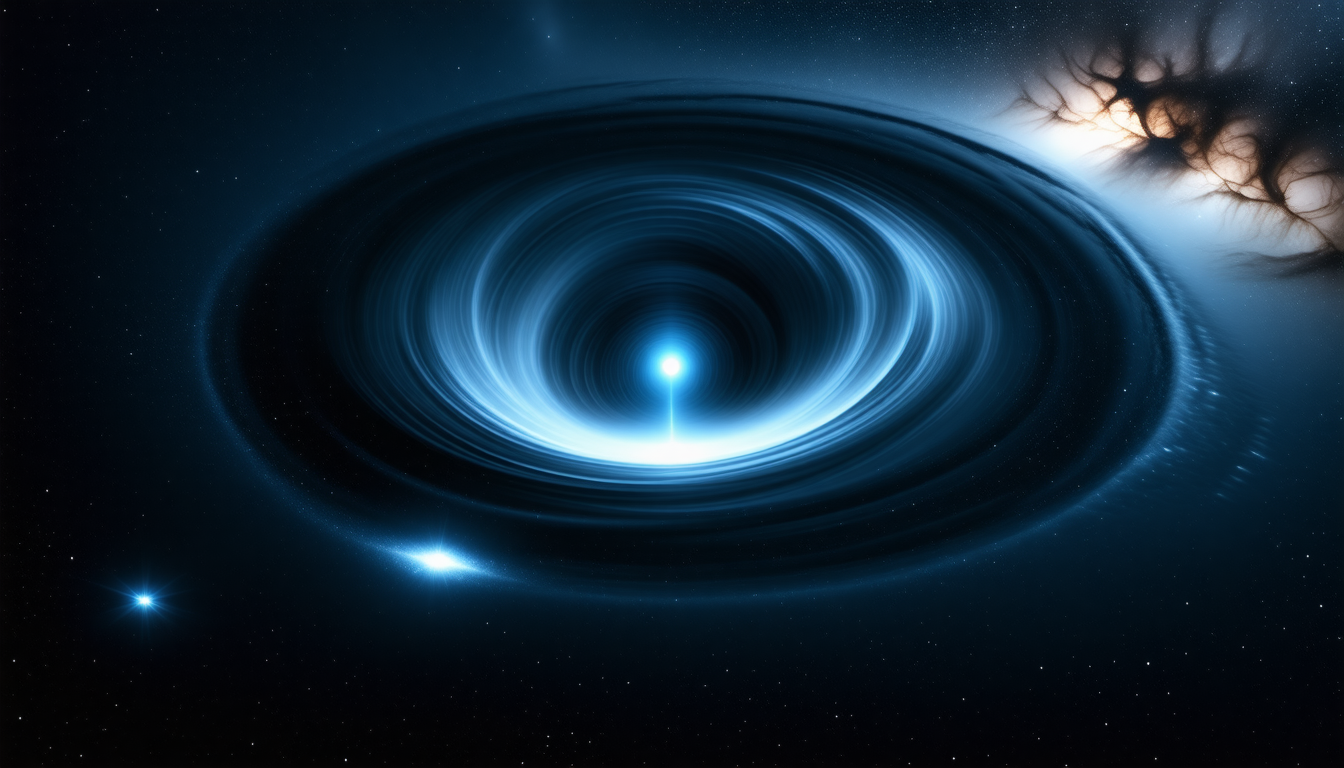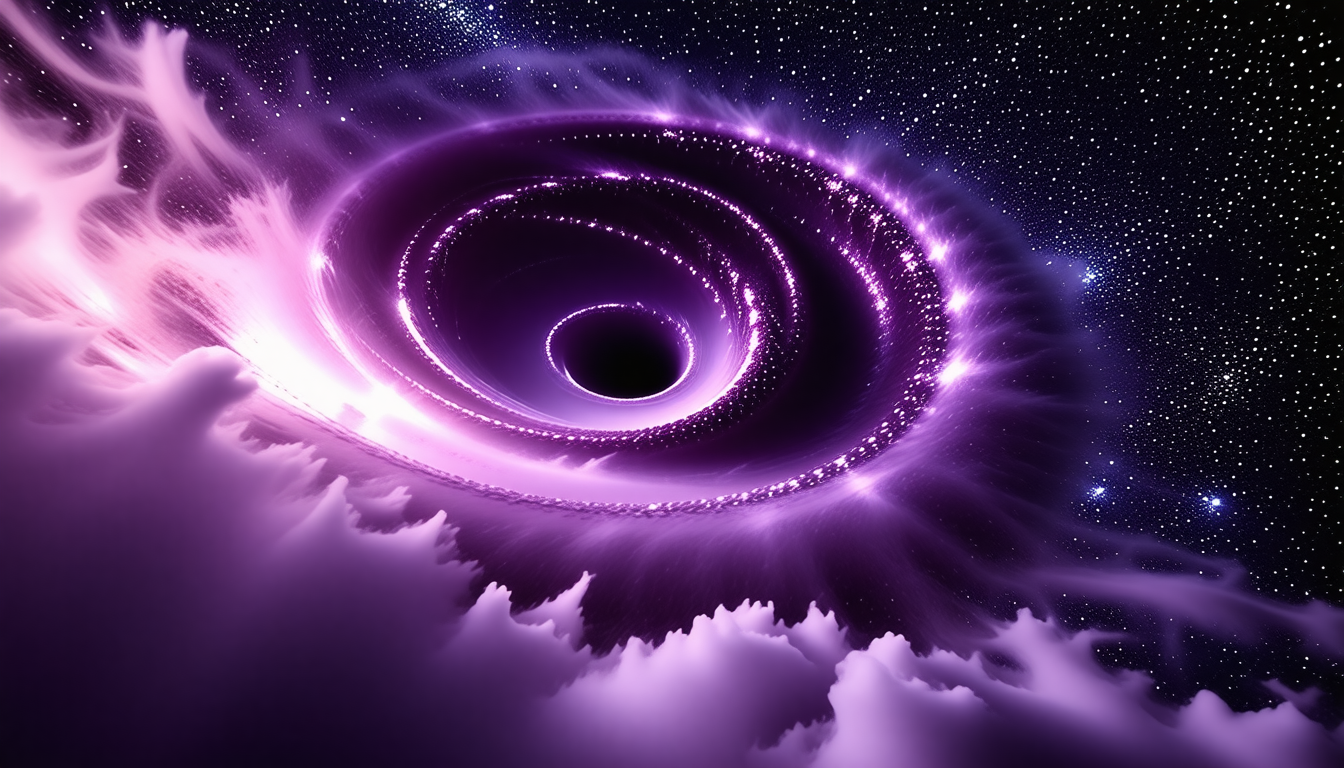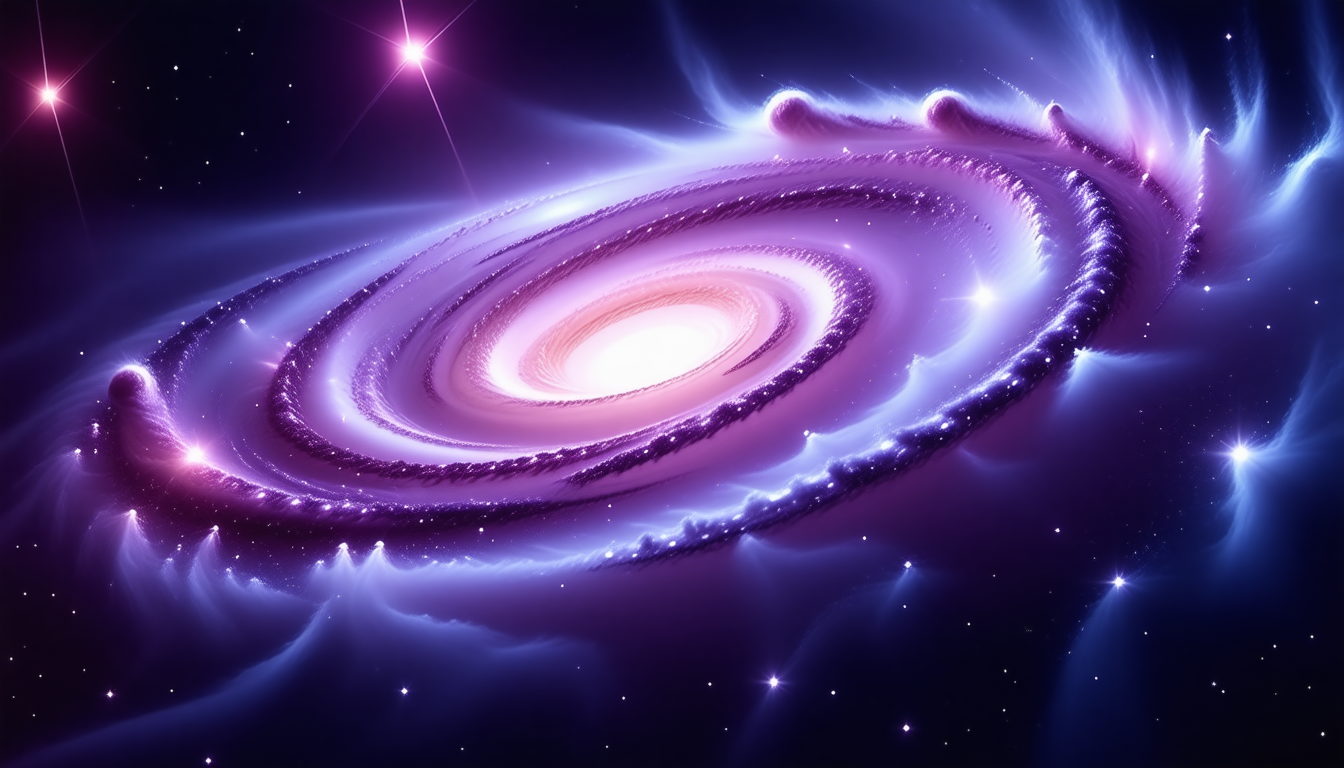Cosmic Horrors Unveiled in the Night Sky

Overview of Cosmic Horrors in the Night Sky
Imagine standing under a star-studded sky, the vast expanse of the universe unfurling above you like a grand tapestry woven from shimmering lights. This celestial wonder, however, is not just a feast for the senses—it’s also home to a multitude of cosmic anomalies that defy our understanding and evoke a sense of dread. The universe is littered with enigmas that, rather than offering comfort, send shivers down our spines as we think their implications. Whether it’s the dark recesses of black holes or the eerie whispers of dark matter, these phenomena tug at the seams of our scientific knowledge, urging us to confront the unknown on a cosmic scale.
At first glance, the night sky might appear peaceful, but it invites us to contemplate some of the most perplexing and awe-inspiring aspects of our universe. Each flickering star holds secrets that could stretch the boundaries of human comprehension. For instance, black holes, those voracious cosmic predators, seem to embody the very essence of horror in space. Their existence stems from a simple truth of physics: when massive stars exhaust their fuel, collapse under their gravity, and shrink into oblivion, they create gravitational wells so powerful that even light cannot escape. The idea that something can devour light itself challenges not only our understanding of gravity but the very fabric of reality.
Yet, amidst the terror of these cosmic monsters, deeper questions arise. What occurs at the event horizon, the point of no return? What happens to the information ‘lost’ within a black hole? These uncertainties prop up a rich foundation of theories and speculation, blending the lines between established science and intriguing philosophy. As astrophysicists grapple with the information paradox—the idea that information may not be lost in a black hole but instead encoded on its surface—new paradigms emerge, hinting at exciting insights yet to be discovered.
Alongside black holes exists dark matter, an even more ominous presence hidden in the cosmos. Comprising approximately 27% of our universe, dark matter does not emit, absorb, or reflect light, rendering it nearly invisible. Yet, its influence is undeniable, shaping the structure and dynamics of galaxies, binding them together in ways we cannot directly observe. The reality of dark matter forces scientists to confront the limitations of their understanding, posing the question: what lurks in the dark that we have yet to comprehend? As galaxies spin and rotate, their movements reveal the gravitational dance orchestrated by dark matter, yet its nature remains elusive. In this shadowy realm, one can’t help but feel a shudder of unease, a reminder of the unknown lurking just beyond our current knowledge.
Beyond the gravitational giants and invisible forces, the universe throws more enigmas into the mix. Fast radio bursts, mysterious and brief flashes of radio emissions from the deep reaches of space, continue to baffle astronomers. Lasting mere milliseconds, these bursts are thought to originate from sources as varied as magnetars to the collision of neutron stars. The recent discovery of their repeating patterns raises tantalizing questions—could these signals be the echoes of some advanced alien technology or simply cosmic phenomena we struggle to grasp? Each new detection instills a sense of intrigue, as we are compelled to wonder about the very nature of cosmic communication.
Furthermore, gamma-ray bursts, the universe’s most explosive events since the Big Bang, reignite the fear of the unknown. These brief but intensely powerful explosions can unleash more energy than our sun will emit over its entire lifetime. Correlating with massive stellar collapses or the merging of neutron stars, their unpredictability paints a vivid picture of a universe where chaos can give rise to unimaginable violence. The consequences of these cosmic events extend far beyond their immediate vicinity, with the potential to affect astrobiological processes and even life on distant planets.
In the grandeur and terror of the cosmos, we also confront fleeting beauty. Some cosmic horrors harbor profound artistic inspirations—an evocative paradox where awe and dread dance together in the night sky. The stories of ancient civilizations and their celestial interpretations still resonate, as they endeavored to make sense of the vast universe. Today, the same mysteries provoke scientists and artists alike to keep searching and imagining, unearthing the haunting beauty hidden within the cosmic horrors.
As we gaze into the night, let the mysteries of the cosmos bind us together—a call to explore the unknown and confront the overwhelming insignificance we feel in the presence of the universe’s vastness. This dance with cosmic horrors reminds us that there is still so much left to learn, the shadows of the unknown lurking just out of sight, prompting us to push the boundaries of human knowledge and understanding further than we ever thought possible.

The Enigmas of Dark Matter and Dark Energy
The enigma of dark matter tantalizes our scientific imaginations, forming the backbone of the universe’s structure while eluding our grasp. Although it constitutes roughly 27% of the universe, dark matter remains shrouded in mystery. Unlike ordinary matter that we are familiar with—atoms and molecules—it neither emits nor interacts with electromagnetic radiation. Instead, its existence is inferred through its gravitational effects on visible matter, allowing cosmologists to piece together a haunting puzzle about the universe’s grand architecture.
When astronomers observe the rotation of galaxies, they notice a perplexing anomaly: the outer stars zip around their galactic centers much faster than expected based solely on the visible mass. According to Newtonian physics, one would anticipate a declining orbital speed for stars located further from the gravitational pull of a galaxy’s center. Instead, the stars maintain a constant velocity, suggesting an unseen mass—dark matter—is at play. This revelation not only upends conventional notions about gravity and mass distribution but also compels scientists to rethink their models of galaxy formation and evolution.
Research has revealed that dark matter acts as an unseen glue, holding galaxies together over cosmic time. By acting like scaffolding, it shapes the structure of the entire universe, influencing the gravitational behavior of clusters and superclusters. Models of cosmic structure that incorporate dark matter help explain the cosmic web that characterizes our universe, demonstrating how galaxies are not randomly distributed, but rather follow intricate patterns shaped by the gravitational influence of dark matter. Despite its predominant role in the cosmos, dark matter remains elusive—a shadow that slips through our observational fingers.
In parallel, dark energy emerges as another enigma, further deepening the mysteries of the universe. Comprising about 68% of the universe, dark energy is the force driving the accelerated expansion of space. First observed when astronomers noted that distant supernovae were moving away from us faster than predicted, the implications of dark energy challenge our comprehension of cosmic dynamics. If galaxies are racing away from each other, what does it mean for the future of our universe? Will it continue to expand indefinitely, ultimately leading to a cold, desolate existence known as the “Big Freeze”? Or could different forces maintain a balance, leading to a cyclical universe?
Many theories seek to explain the nature of dark energy, ranging from inherent properties of space itself to new physics beyond the current understanding. Some cosmologists propose that dark energy is a constant, a form of energy uniformly spread throughout space. Others suggest that it could be linked to quantum fluctuations in the vacuum of space, adding an entire layer of complexity to the universe’s fabric. This tenuous understanding leaves scientists grappling with profound questions: What exactly is dark energy? How does it influence the cosmos? And, ultimately, why does the universe behave as it does?
Together, the mysteries of dark matter and dark energy form a cosmic dance of shadows, challenging our understanding of reality while beckoning us to explore deeper. As we confront these enigmas, we are propelled toward new realms of inquiry, asking not only what these phenomena are but also what they reveal about the fundamental nature of existence itself. In this quest for understanding, we discover that our universe is a stage for not only tremendous beauty and complexity but profound uncertainty, compelling us to face the invisible forces that shape our reality.
The pursuit of dark matter and dark energy is not merely an academic exercise; it resonates with a deeper human impulse to find meaning in the chaos of the universe. Each discovery brings us a step closer to unveiling the fabric of our reality, reminding us that the journey into the cosmic unknown is rooted in our innate desire to seek knowledge and recognize our place within this grand tapestry of existence. Just as we consistently expand our understanding of the universe, we must also embrace the unanswered questions, the shadows that linger, urging us to look beyond our visible world and explore what lies in the cosmic depths.

The Dreadful Allure of Black Holes and Neutron Stars
The dreadful charm of black holes and neutron stars evokes not only terror but also profound fascination as we strive to comprehend their nature within the dark cosmos. Black holes, those enigmatic voids in space, illustrate the stark consequences of stellar evolution and the sheer power of gravity. Formed from the remnants of massive stars after they have culled their nuclear fuel, these celestial objects practically redefine our understanding of the universe. At their core lies a singularity, an infinitely dense point where conventional laws of physics break down, leading us to confront the fundamental limits of our knowledge.
The event horizon, the threshold beyond which nothing can escape the black hole’s gravitational grasp, serves as a chilling reminder of the boundaries of our understanding. Once something crosses this boundary, it is swallowed into darkness, leading to the famous information paradox. This enigma challenges the very essence of reality: if information cannot escape, where does it go? Theoretical solutions abound, from holographic principles that suggest information is stored on the event horizon to the bizarre implications of parallel universes where that information might reside. Each proposed explanation launches us deeper into the unknown, illuminating how much we have yet to learn about the cosmos.
Neutron stars, born from the explosive death of supernovae, present a different yet equally harrowing picture of cosmic phenomena. As gravity crushes the remnants of a massive star, protons and electrons coalesce to form neutrons, resulting in an astonishingly dense object. A sugar-cube-sized amount of neutron star material weighs as much as a mountain, illustrating the extremes of physics in action. Neutron stars are not only dense but often rotate at incredible speeds, sometimes completing a rotation in mere milliseconds, which gives rise to pulsars—highly magnetized, neutron-emitters sending out beams of radiation like cosmic lighthouses. Their rhythmic emissions offer a means to explore the physics governing extreme environments.
Furthermore, magnetars, a specific type of neutron star, possess magnetic fields far more powerful than those on Earth, resulting in unique and often violent phenomena. These astonishing objects can unleash bursts of X-rays and gamma rays, further complicating our understanding of stellar life cycles and nuclear interactions under extreme conditions. Ongoing studies of these entities not only enhance our grasp of fundamental physics but also provide insights into the outward manifestations of restless cosmic energies.
The interconnection between black holes, neutron stars, and the darker aspects of our universe highlights an unsettling reality: the cosmos can act as both creator and destroyer. Each black hole lurking in the depths of space is a potential cradle of mysteries waiting to be discovered; the echoes of its gravitational influence shape surrounding galaxies and their destinies. Meanwhile, neutron stars, with their fringe applications in fundamental physics and gravitational wave observations, further blur the lines between life and death in the stellar realm.
Together, these cosmic beacons, however frightening, compel us to peer boldly into the abyss—not only to understand the mechanics of black holes and neutron stars but also to confront the reflective questions of our own existence. As we probe these thrilling anomalies, we find not just a myriad of wonders hidden in the dark but a reminder of the vast potential within the universe and ourselves. The dread stirred by black holes and neutron stars eventually transforms into inspiration—a call to embrace the unknown and continue our relentless exploration of the cosmos.
The Mysterious Signals and Echoes from Deep Space
The universe is filled with signals, whispers from the far reaches of the cosmos that evoke both excitement and mystery. Among these are the enigmatic fast radio bursts (FRBs), brief but intense flashes of radio emissions originating from deep space. Discovered a little over a decade ago, these fleeting bursts, which typically last only a few milliseconds, have sparked considerable interest in the astronomical community for several reasons. Their precise origins remain elusive, with possible explanations ranging from highly energetic magnetars—neutron stars with extraordinarily powerful magnetic fields—to hypothetical interactions involving alien civilizations. Each detection of an FRB is a tantalizing clue, beckoning scientists to probe the depths of cosmic phenomena and to question the very nature of communication across the universe.
One of the most compelling features of fast radio bursts is their variability. In 2015, the discovery of a repeating FRB caught the attention of researchers, leading to a wave of excitement and speculation. Unlike their non-repeating counterparts, the repeating FRB, now designated FRB 121102, continued to emit regular bursts over a period of time. This repetition provides astronomers with the opportunity to study these signals in greater detail, attempting to unveil the physical processes behind them. The mystery deepens as some bursts exhibit patterns that could suggest they are influenced by their environment—a characteristic that adds complexity to their origins and potentially establishes them as messengers with significant stories to tell.
In addition to FRBs, the universe has delivered another category of signals: gravitational waves. Predicted by Einstein’s general theory of relativity, these ripples in the fabric of spacetime were first observed in 2015 as a result of the merger of two black holes. This landmark discovery not only confirmed a significant prediction of general relativity but opened an entirely new window of astrophysical investigation. Gravitational waves carry with them the echoes of cataclysmic cosmic events, revealing the behavior of black holes and neutron stars previously cloaked in secrecy. With each new detection, scientists refine their understanding of the violent dynamics of the universe, including the nebulous nature of spacetime and the ever-present interplay of gravity and energy.
As we hunt for signals from extraterrestrial civilizations, we must think the nature of such communication. Are we alone in the cosmos, or are there other minds gazing into the night sky, seeking the same mysteries? The search for extraterrestrial intelligence (SETI) has involved scanning the heavens for anomalous radio signals that might hint at intelligent life. Signals like the Wow! Signal, detected in 1977, remain unexplained and tantalizingly unresolved. Its intense burst of radio waves from the direction of the constellation Sagittarius still lingers in the minds of those who wish to reach across light-years to connect with other life forms.
Moreover, the discovery of Tabby’s Star (KIC 8462852), which exhibited peculiar dimming patterns, raised questions about the possibility of artificial megastructures surrounding it. Some researchers even speculated the presence of advanced civilizations constructing massive constructs to absorb stellar energy, although further investigations indicated a range of natural explanations, including dust and comet activity. Such mysteries challenge our interpretation of what constitutes a signal from the universe; they insist that we remain vigilant in uncovering the voices hidden in the cosmic silence.
As we dive into these cosmic signals—fast radio bursts, gravitational waves, and mysterious light patterns—each discovery captures a fragment of the grand narrative of the universe. They illuminate our understanding of the complex interactions at play across vast distances and remind us that the cosmos is constantly alive with communication, whether through the haunts of extinct stars or the raw power of a merging black hole. We are compelled to listen carefully to these echoes, which may ultimately lead us to profound revelations about our universe and, perhaps, our own existence.